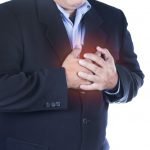Evaluation of Gait Disorders in the Elderly
Docere
Thomas A. Kruzel, ND
Gait disorders are one of the leading causes of falls in the elderly population, leading to increased morbidity and mortality. It is estimated that there are approximately 2.5 million elderly persons in the United States who have some form of walking problem.1,2 This ranges from 4% in the group aged 65 to 74 years, increasing to 26% among those older than 85 years.1,3,4 Statistics cited in several studies1,5,6,7,8 report that about one-third of people older than 65 years fall each year, with this being a recurring problem in more than half of them. About 10% of these falls result in significant morbidity, which increases with advancing age.3,9 Falls are the fifth most common cause of death in the elderly, especially if they result in hip fracture.9 A fear of falling contributes to decreased mobility in seniors, further increasing their risk because of the self-imposed immobility that results in muscle atrophy.
Physiology of Gait
Walking is easy because we do it all the time, and rarely do we have to think about it. We may at times consciously take control and direct our gait when we dance, run, or climb. The underlying mechanisms of one’s gait are complex and tend to become altered as we age.
According to the British Anthropologist John Napier,
“Human walking is a risky business. Without split-second timing man would fall flat on his face; in fact with each step he takes, he teeters on the edge of catastrophe.”10
From our first steps through childhood and adolescence, we continually refine our gait as the body grows and develops.11
Control of balance and posture, both at rest and with movement, is an integral part of propulsive movement because we must maintain our center of gravity when doing so. Most of the body weight in humans is centered in the middle to upper body, which makes us inherently unstable because the legs become narrower in relationship to the upper body. In some individuals, this upper body mass (obesity) can be significant, making it more difficult to ambulate. The parameters of gait are determined by the limits of stability, with anatomical changes associated with aging that make this inverted triangle more unstable. Elderly patients will often adopt different walking styles to compensate. When compared to younger adults, elderly patients have significantly reduced gait speed, stride length, and increased double support time.12 Additionally, the toe push-off is less vigorous as well, as there is greater step timing variability.13 These changes are thought to be due to either a degeneration of the balance control system, loss of muscle mass, or compensatory adaptation due to changes of aging or fear of falling.14
The following are basic components of a person’s gait, all of which have a role in maintaining stability with ambulation. Observation of these by the physician can provide clues about arising problems with an elderly patient’s ability to maintain mobility.
Ability to Stand
The patient should be asked to stand without using his or her arms. If the patient cannot do this, then have him or her try to stand by pushing off from the armrests on the chair. Note how the patient was able to do this. Is it a smooth motion with good balance, is there a listing to one side or the other, or does someone need to assist the patient?
Posture
Elderly patients with an abnormal posture will generally have kyphosis, scoliosis, or some degree of both. Rarely, patients may have a hyperlordotic posture from lower spinal muscle weakness or dystonia. Curvature of the spine may occur anywhere and should be noted. Changes in posture alter a person’s normal gait motion.
Base
The normal width of foot placement is considered to be the width of the shoulders. The base of the patient should be noted both when standing and when walking.
Stride and Foot Strike
The length of a person’s stride depends on the speed of his or her gait, as well as the individual’s height. Elderly patients rarely take long strides but rather shorter ones in order to maintain stability. This also occurs with a fear of falling, so the patient may appear as if he or she is walking on ice.
Arm Swing
Arm swing is important to maintain balance when walking but will be altered with certain conditions such as stroke or Parkinson disease, as well as in patients with essential tremor or with choreiform disorders. Often, the patient’s stride is also altered in order to compensate.
Turning
A normal turn requires a pivot, with one foot being kept on the ground, with rotation occurring on the ball of that foot. The other foot then moves in the direction the person wishes to turn, with the upper body following suit. This is normally accomplished as a smooth and effortless task but will be altered with certain diseases. This is when falls most often occur due to the inherent instability of turning.
Patient Evaluation
As with any condition encountered among the elderly, single complaints almost always have multiple causes. The most common causes of gait difficulties are pain, unsteadiness, stiffness, dizziness and vertigo, weakness, numbness, or a sensation of abnormal movement. A wide variety of other conditions can predispose to problems with gait but are not as common.
The best predictors of whether the elderly patient is at risk of falling are poor health, impaired vision, and gait changes due to structural changes from aging or disease. The clinical diagnoses most often encountered leading to gait changes are degenerative joint disease, orthostatic hypotension, post-cerebrovascular accident, intermittent claudication, congenital or other deformity, and rheumatoid or gouty arthritis.16,17
Gait evaluation should be conducted among all elderly patients at some point in their treatment. This could occur at a specific visit or over a series of visits, so that you eventually have a baseline to refer to. At each visit, I observe my patients (of all ages) as they walk into the office, sit down, and then stand, to see if there are any changes. As previously mentioned, walking is largely a vegetative function (ie, we do not think about it; we just do it), and a change here can often provide a clue that something else is going on.
History
This is probably one of the most important aspects of the examination because the majority of the time it will guide you to the cause of the gait disturbance. The history should be oriented toward problems associated with the chief complaint (ie, arthritis, hypotension, etc), family history, medical history, and, in particular, a review of medications.
Physical and Mental Status Examination
A thorough screening physical examination with emphasis on visual acuity, orthostatic blood pressure, peripheral pulses, and height and weight should be done. A screening mental status examination, such as the Folstein Mini Mental Status, should always be performed.
Standing Examination
The standing examination assesses the patient’s balance. It also tests the postural supporting reflexes.
First is the nudge test. A patient stands with the feet close together, while a light steady pressure is applied to the patient’s sternum for a few seconds.
Second is the Trendelenburg test, which assesses any weakness of the gluteus medius muscle, which abducts and medially rotates the thigh, while also steadying the pelvis. It will produce a slight depression in the thigh with contraction.
Third is range of motion of both the lumbar and cervical spine. The cervical spine range of motion is important in the detection of dizziness and/or unsteadiness. This part of the examination is completed with the patient reaching over his or her head and then to the ground as if to pick up an object.
Walking Examination
The following 8 components of a person’s gait should be examined in the walking examination. Furthermore, the patient’s shoes should also be checked for clues as to the gait disorder.
First is initiation of gait. This should be smooth, without hesitancy or ataxia. Hesitancy may be seen in patients with Parkinson disease.
Second is step length, height, and symmetry. The foot swing should clear the floor as it passes the stance foot. Step length and height are equal bilaterally. Decreased step length and height are often seen in persons with fear of falling or with visual acuity problems, while an asymmetric or hopping gait indicates weight-bearing joint disorders.
Third is step continuity. When the swing foot is off the floor, the stance foot is pushing off the toes. If step discontinuity is present, this smooth flow is disrupted. This condition is often seen in patients with gouty arthritis or other painful conditions of the toes.
Fourth is the step path. Observe the patient from the rear as he or she walks, and note any deviation the feet make from a straight line. Abnormalities are often due to proprioceptive sensation loss, as in diabetes or syphilis.
Fifth is trunk motion. With normal walking motion, there is almost no side-to-side motion, the knees are straight, and the arms are next to the body. A waddling gait may indicate unilateral or bilateral hip disease.
Sixth is walking stance. In a normal gait, the heels will almost touch one another; decreased proprioception will cause a widened gait. A slight amount of this is normal in some elderly persons.
Seventh is turning. Turning is normally smooth and continuous. En bloc turning may indicate Parkinson disease, while staggering may be an indication of multisensory deficits.
Eighth is heel-to-toe walking.
Observe the muscles of the anterior leg
(heel walking) and posterior leg (toe walking).
Lumbar disk disease should be considered if difficulty with toe walking is encountered. Muscle wasting diseases and neurosyphilis should also be considered.
Sitting Examination
The sitting examination should include range of motion of the toes, ankles, and knees. Specific muscle testing of the upper and lower leg and foot muscles is conducted next. The neurosensory examination includes reflexes, muscle tone, sensory distribution, and cerebellar function (Babinski sign). If claudication is suspected, then evaluation of the pulses before and after mild exercise may be done. This may be a good time to perform your funduscopic examination.
Supine Examination
Range of motion of the hips in the neutral and flexed position is assessed in the supine examination. The Thomas test for hip flexion contracture can be performed, as well as the Patrick test for hip disease, straight leg raise for sciatica, and motion palpation for sacroiliac involvement. Measurement of the legs for equality of length and calf and thigh size will help assess for an anatomical short leg and muscular wasting. Assessment of abdominal muscular strength may be conducted by having the patient sit up without using his or her hands.
Prevent Falls and Decrease Morbidity
Gait disorders are a major cause of functional impairment and morbidity in the elderly population. By consistently evaluating an elderly patient’s gait, we decrease the risk of falling and its accompanying morbidity and mortality. Furthermore, we are able to begin therapy and rehabilitation at an earlier time, enhancing the chances for success.
 Thomas A. Kruzel, ND is a naturopathic physician who is in private practice at the Rockwood Natural Medicine Clinic in Scottsdale, Arizona. He received a BA in Biology from the California State University at Northridge, and his Doctorate of Naturopathic Medicine degree from the National College of Naturopathic Medicine. Dr. Kruzel is also a board certified Medical Technologist. He completed 2 years of Family Practice Medicine residency at the Portland Naturopathic Clinic where he was chief resident prior to entering private practice. He also completed a fellowship in Geriatric Medicine through the Oregon Geriatric Education Center and the Portland VA hospital. Dr. Kruzel has been an Associate Professor of Medicine at National College of Naturopathic Medicine where he has taught Clinical Laboratory Medicine, Geriatric Medicine and Clinical Urology. He is the author of the Homeopathic Emergency Guide, A Quick Reference Handbook to Effective Homeopathic Care, published by North Atlantic Books and has published numerous articles in The Journal of Naturopathic Medicine as well as other publications. He is also the past president of the American Association of Naturopathic Physicians and was selected as Physician of the Year by the AANP in 2000 and Physician of the Year by the Arizona Naturopathic Medical Association in 2003.
Thomas A. Kruzel, ND is a naturopathic physician who is in private practice at the Rockwood Natural Medicine Clinic in Scottsdale, Arizona. He received a BA in Biology from the California State University at Northridge, and his Doctorate of Naturopathic Medicine degree from the National College of Naturopathic Medicine. Dr. Kruzel is also a board certified Medical Technologist. He completed 2 years of Family Practice Medicine residency at the Portland Naturopathic Clinic where he was chief resident prior to entering private practice. He also completed a fellowship in Geriatric Medicine through the Oregon Geriatric Education Center and the Portland VA hospital. Dr. Kruzel has been an Associate Professor of Medicine at National College of Naturopathic Medicine where he has taught Clinical Laboratory Medicine, Geriatric Medicine and Clinical Urology. He is the author of the Homeopathic Emergency Guide, A Quick Reference Handbook to Effective Homeopathic Care, published by North Atlantic Books and has published numerous articles in The Journal of Naturopathic Medicine as well as other publications. He is also the past president of the American Association of Naturopathic Physicians and was selected as Physician of the Year by the AANP in 2000 and Physician of the Year by the Arizona Naturopathic Medical Association in 2003.
References
Hough JC, McHenry MP, Kammer LM. Gait disorders in the elderly. Am Fam Physician. 1987;35(6):191-196.
Lam R. Office management of gait disorders in the elderly. Can Fam Physician. 2011;57:765-770.
Salzman B. Gait and balance disorders in older adults. Am Fam Physician. 1982;1(7).
Moylan CK, Binder EF. Falls in older adults: risk assessment, management and prevention. Am Med. 2007;120(6):493.e1-493.e6.
Tinetti ME. Clinical practice: preventing falls in elderly persons. N Engl J Med. 2003;348(1):42-49.
Tinetti ME, Speechley M, Ginter SF. Risk factors for falls among elderly persons living in the community. N Engl J Med. 1988;319(26):1701-1707.
Tinetti ME, Speechley M. Prevention of falls among the elderly. N Engl J Med. 1989;320(16):1055-1059.
Hazzard W, Blass J, Ettinger W, Halter J, Ouslander J, eds. Principles of Geriatric Medicine and Gerontology. 4th ed. New York, NY: McGraw-Hill; 1999.
Friedman JH. Gait in the elderly. Med Health R I. 2008;91(5):134-135.
Lewin R. Human Evolution. An Illustrated Introduction, 3rd Ed. Cambridge: Blackwell Scientific; 1993:208.
Hausdorff JM, Zemany L, Peng C, Goldberger AL. Maturation of gait dynamics: stride-o-stride variability and its temporal organization in children. J Appl Physiol. 1999;86:1040-1047.
Winter DA, Patla AE, Frank JS, Walt SE, Bio-mechanical walking pattern changes in the fit and healthy elderly. Phys Ther. 1990;70:340-347.
Menz HB, Lord SR, Fitzpatrick RC, Age-related differences in walking stability. Age and Ageing. 2003;32:137-142.
Bridenbaugh S, Kressig R. Laboratory review: the role of gait analysis in seniors’ mobility and fall prevention. Gerontol. 2010;10.
McCollum G, Leen TK. Form and exploration of mechanical stability limits in erect stance. J Mot Behav. 1989;21(3):225-244.
Nevitt MC, Cummings SR, Kidd S, Black D. Risk factors for recurrent nonsyncopal falls: a prospective study. JAMA. 1989;261(18):2663-2668.
Nevitt MC, Cummings SR, Hudes ES. Risk factors for injurious fall. Gerontol. 1991;46:M164-M170










